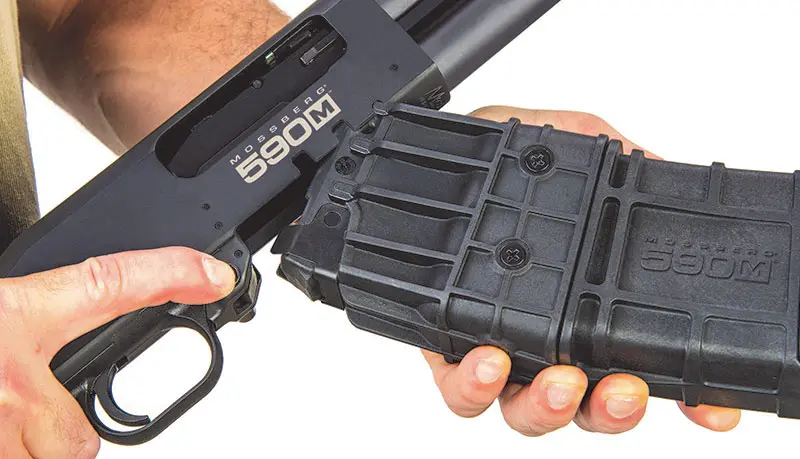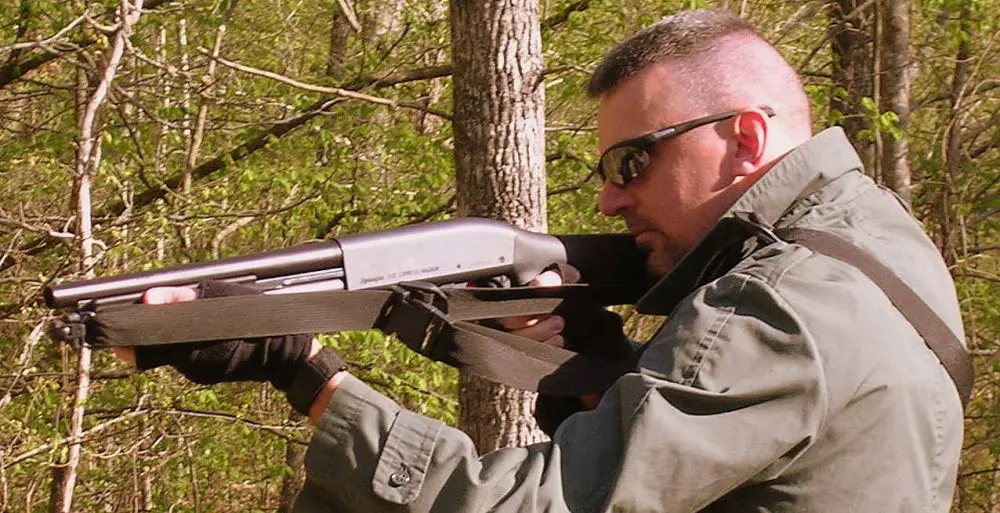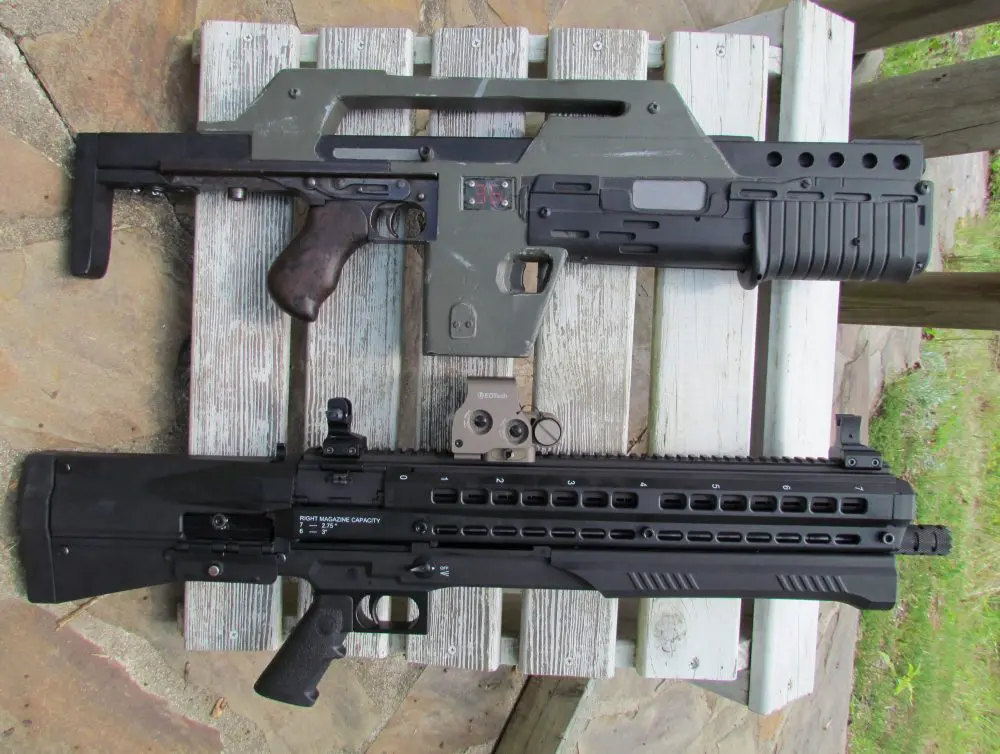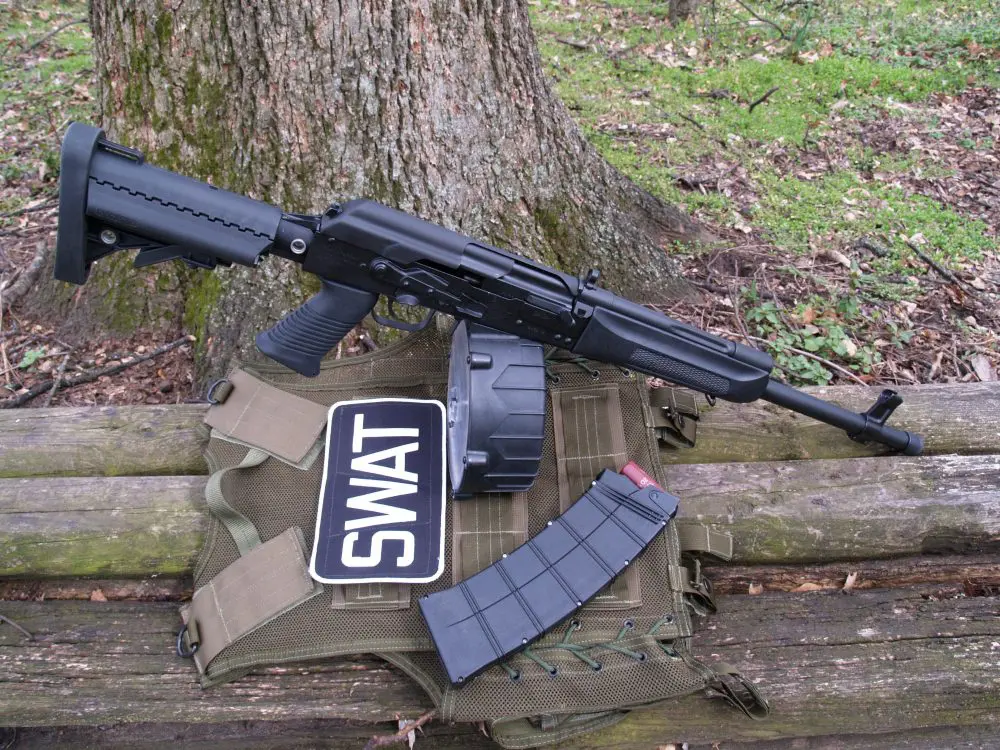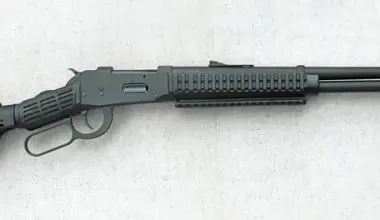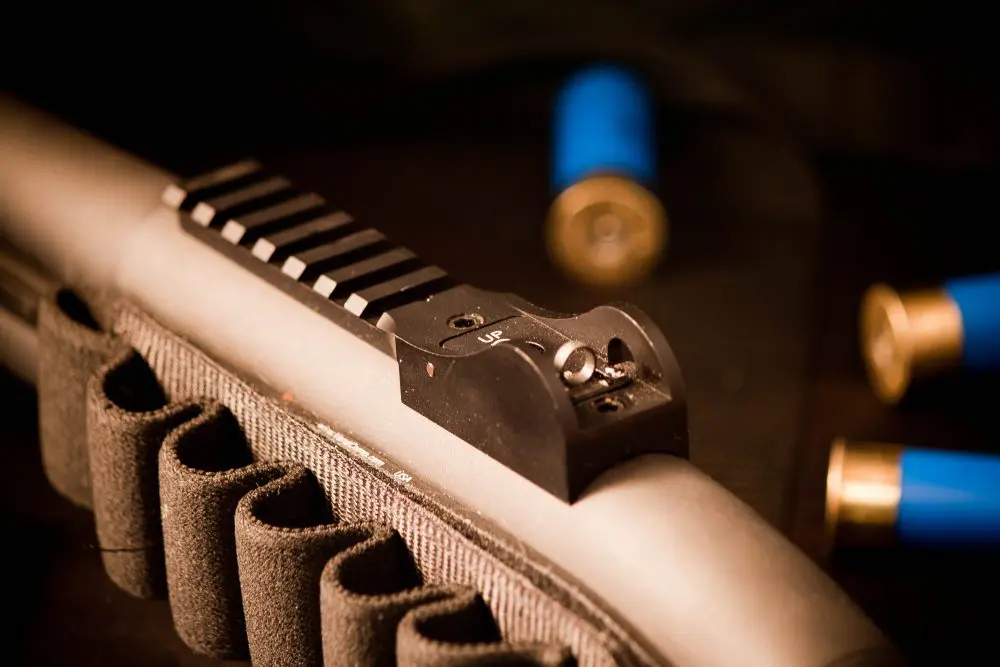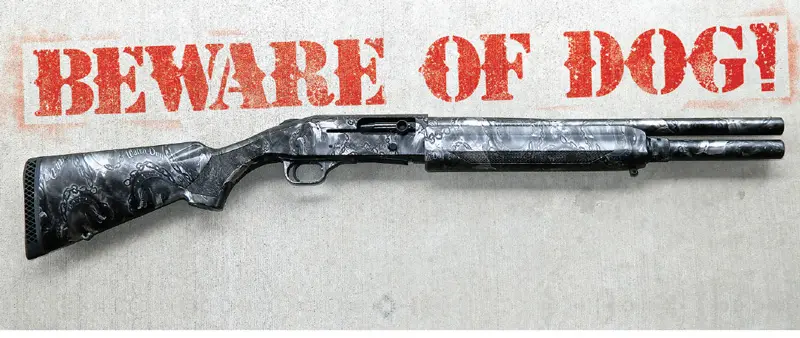
This slightly misquoted line from Mark Twain comes to mind when someone tells me the shotgun is no longer as viable as it once was. On the contrary—the “gauge” is alive and well.
The main prize in the September S.W.A.T. Sweepstakes was Mossberg’s 930™ Special Purpose shotgun with distinctive Proveil Watchdog camouflage pattern. At first glance, I thought the camo on the 930 was an urban pattern and did not notice the “Watchdog.”
Since the Model 930 was on my todo list already and the camo pattern intrigued me, I requested one from Mossberg and set it up for evaluation similar to the Sweepstakes shotgun.
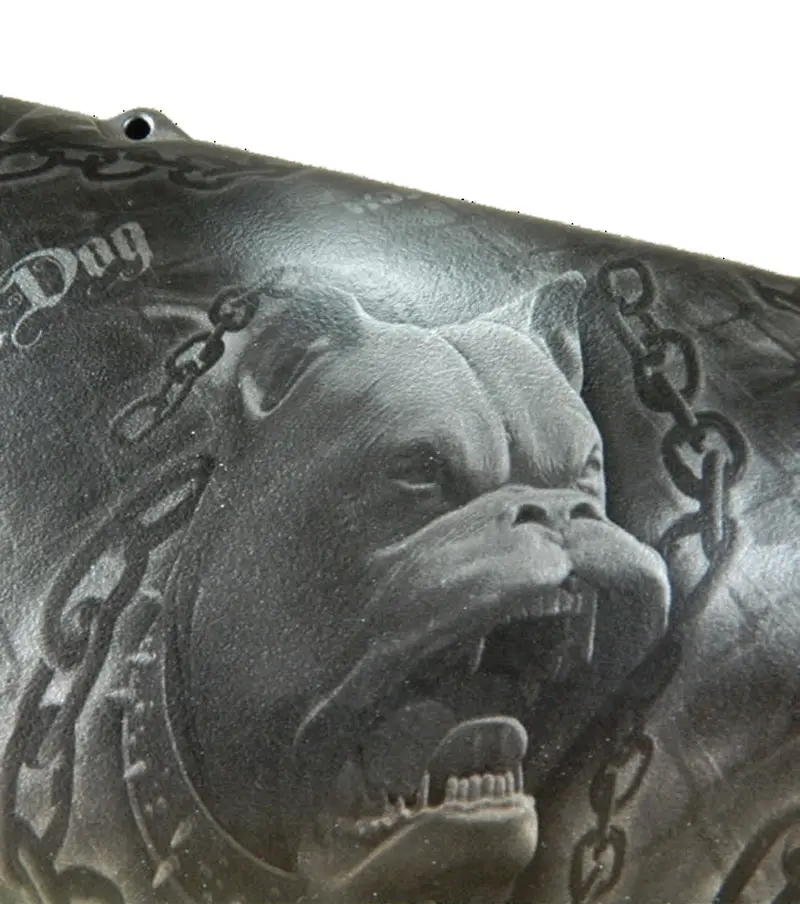
Table of Contents
MOSSBERG MODEL 930
Mossberg’s Model 930 is a semiautomatic gas-operated shotgun that features a dual- vent operating system, which not only reduces felt recoil, but also reduces wear on the gun. It will accept both 2¾- and 3-inch shells.
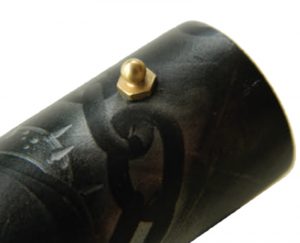
Barrel length is 18½ inches. Sights consist of a simple but time-proven brass bead. The barrel has a cylinder bore choke for optimal pattern spread with buckshot and tighter groups with Foster-type slugs. The receiver is drilled and tapped for those who prefer to mount an optic.
The factory extended magazine is flush with the end of the barrel. Total capacity is eight rounds (with 2¾-inch shells). Overall length is 39 inches. Length of pull (LOP) is 14 inches, and weight is 6.75 pounds.
Both the stock and forend are synthetic. The forend has a sling stud, while the sling attachment point on the stock is molded in. For a sure grip, there is checkering on both the forend and pistol grip area of the stock. The stock is capped off with a ventilated recoil pad. The operating handle is oversized and knurled, making it easy to operate even with a gloved hand. The bolt release is checkered.
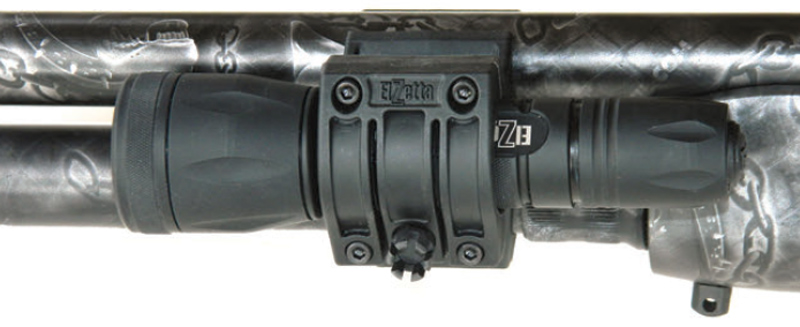
To load the 930, place the shotgun on “safe” and fully retract the bolt with the oversized operating handle; the bolt will remain in the open position. Place a shell directly in the chamber or on the elevator and push the bolt release. The bolt closes with a lot of force, so keep your fingers out of the way. Now the magazine tube can be loaded in the normal fashion.
To unload, ensure the shotgun is on “safe.” Depress the elevator and push the bolt release for each shell in the magazine. When the magazine is empty, pull back on the operating handle and eject the chambered shell.
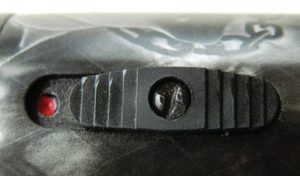
LET THERE BE LIGHT
Defensive firearms should have a white light, and I set the 930 up with the same system offered on the Sweepstakes shotgun—an Elzetta Model B142 Modular Flashlight and ZSM-T Shotgun Flashlight Mount.
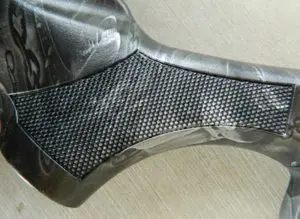
The Elzetta B142 produces 650 lumens of diffused white light through its unique field-replaceable Flood Lens. The simple click switch is nearly silent in operation and offers a positive tactile feel. The ZSM-T Shotgun Flashlight Mount places the flashlight in a natural ergonomic position for intuitive operation and allows peripheral light from the flashlight to illuminate the 930’s bead sight.
Because when a light is turned on— even if just for a moment—your night vision is blown, my general SOP is that once the light is turned on, it stays on. I can activate the B142 by running my hand to the end of the forend and clicking the tailcap with my weak-hand thumb.
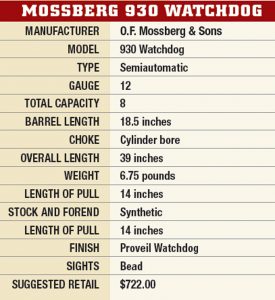
For those with a shorter reach or who prefer to leave the light off as they move, Elzetta offers a remote tape switch with five-inch cord.
MORE AMMO!
The most common arguments against using a shotgun for self-defense or law enforcement are its relatively low ammunition capacity, its being slow to reload, and the issue of how to carry extra ammunition.
The 930 has a total capacity of eight rounds, almost twice that of many slide-action shotguns and four times the vaunted double barrel. In my mind, that’s enough to get the job done in all but the most extreme situations. Which brings us to its being slow to reload and carrying extra ammunition. Popular with many are the two-round Kydex shell carriers offered by several manufacturers. But only two extra shells may or may not serve your needs.
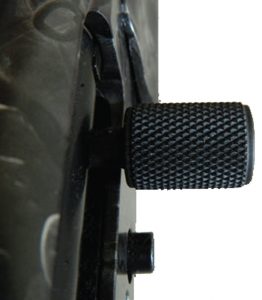
While researching an unrelated article, I came across AP Custom, a company that manufactures shotgun shell caddies and AR accessories. The shotgun caddies are machined from solid billet aluminum. AP Custom offers the 4X4 (eight round), 3X3 (six rounds), and the Classic Four four-round caddies.
The 4X4 holds four rounds each in two adjacent slots, the 3X3 holds three rounds each in adjacent slots, and the Classic Four holds four shells in one slot. The shells are kept in place by a stainless steel leaf spring at the top of the caddy. The caddies are designed to extract four (or three) shells at a time to load the shotgun as quickly as possible.
Popular with 3-Gun competitors, the caddies are also viable for shotgunarmed citizens or peace officers. With real estate on a belt always a concern, I think the 4X4 is the most efficient use of space, and I acquired two of the units from AP Custom for evaluation. With two caddies, a shooter has two complete reloads for the 930.
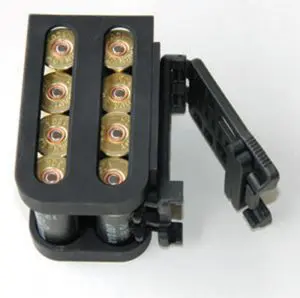
SIGHTS
A bead sight is sufficient for normal buckshot range, be it home defense or law enforcement. But unless the shooter spends a lot of time on the range firing slugs to become familiar with what holdover to use with a bead, other sighting systems are often better for slugs.
Since I wanted to see how much accuracy the 930 was capable of, I mounted a Sun Optics CD13-RD003A (CD13) dot sight using a Mossberg Picatinny rail. This sight has a 3 MOA dot and five levels of intensity with either a green or red dot.
This sight can be found on the web for as low as $75, making it attractive to people on a tight budget. I wanted to see how this economical sight would hold up to hard use—and the recoil generated with slugs and buckshot out of a shotgun would be a good indicator.
FIELD EVALUATION
It deserves mentioning that my results are specific to the test shotgun. More than any other firearm type, shotguns can be finicky, and a load that might perform well in one shotgun may be miserable in another—even the same brand and model. Especially for selfdefense, it is incumbent upon you to spend some money and time at the range to establish which load works best in your shotgun.
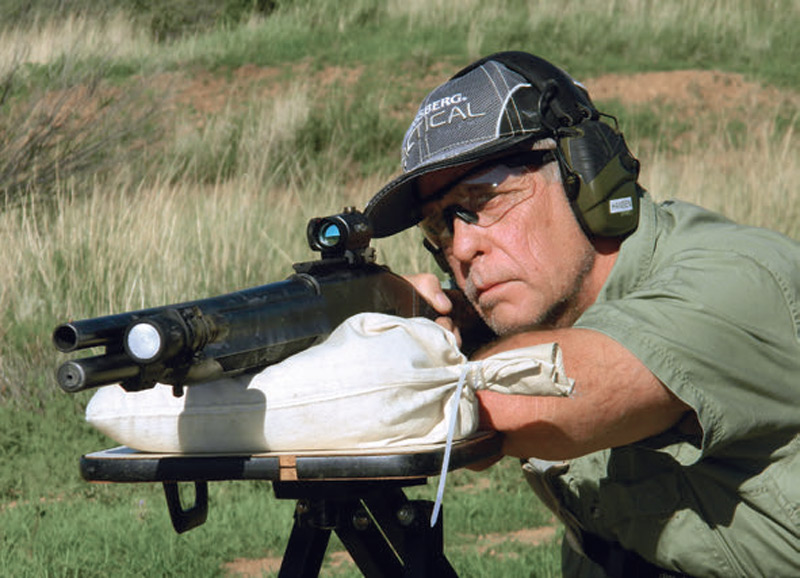
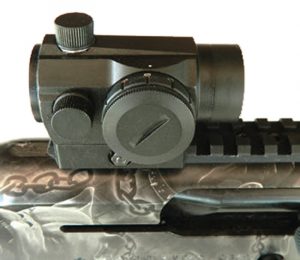
Buckshot
I began the range work with seven different 00 buckshot loads from five manufacturers. All were nine-pellet loads, with the exception of the Hornady Critical Defense (eight pellet) and Sellier & Bellot (12 pellet).
We are morally and legally accountable for each and every projectile we send downrange. With a handgun or rifle, this is one projectile, but with a shotgun, it can be anywhere from one (slug) to nine or more (buckshot).
Starting at five yards, I increased the distance in five-yard increments until the load’s maximum effective distance (MED) was reached. For the purpose of this evaluation, I defined MED to be when all pellets would not stay within a center-mass eight-inch circle. While a stray pellet out of this zone may incapacitate a bad guy, a stray pellet may also hit something or someone you did not mean to strike.
The best-performing buckshot load in the test shotgun was the Federal load with FLITECONTROL® wad, until I was at 35 yards, and even then only two pellets strayed out of the eight-inch circle. The Hornady Critical Defense round with Versatite™ wad was also a very good performer, only dropping one pellet about two inches out of the eightinch circle at 35 yards.
Slugs
Up next was shooting five different one-ounce slug loads—one Estate, one Federal, and three Winchester—for accuracy. The slugs were fired from a sandbagged rest at 50 yards. Three three-round groups from each slug load were averaged for results.
This was without a doubt the least enjoyable portion of the test, as firing a total of 45 12-gauge slugs (not counting shells needed to establish a zero with the Sun Optics sight) from a bench in a short stint is not my idea of a good time. By the end, I was fighting to keep the dot on target and obtain a surprise break without flinching.
The best load was the Federal Truball Deep Penetrating slug, with an average group of 1.68 inches measuring the holes’ outside to outside edges. Subtract the .69-inch diameter of a slug and this amounts to a .99-inch group, which translates to just under two minutes of angle. Pretty impressive from a cylinder bore shotgun!
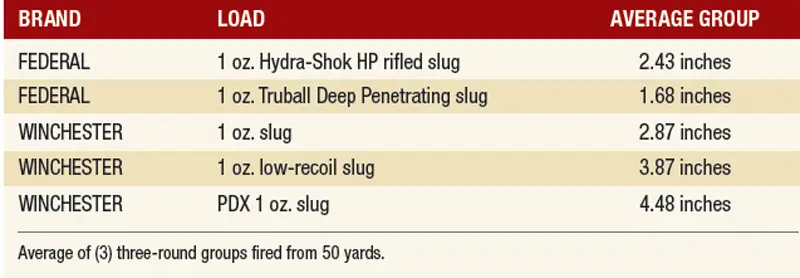
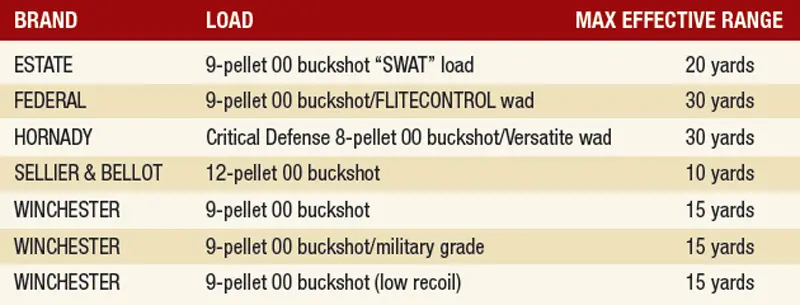
Ringing Steel
Many people believe a semiauto shotgun is faster to hit with because it is, well, semiautomatic. The truth in most (but not all) cases is that they have less recoil because some of the energy—in the form of gas—is used to operate the action. This in turn decreases the recovery time between shots for most people. I say “most people” because I have seen a few rare individuals who could operate a slide-action faster than a semiauto.
Can’t be done, you say? Famed exhibition shooter Ed McGivern used double-action revolvers instead of semiautos to perform his amazing feats because he said he did not have to wait for the action to cycle. For example, he shot five rounds from a double-action revolver at 15 feet in .40 of a second and covered the group with his hand—a record that has never been broken. But for most of us mere mortals, semiautos are in fact faster for follow-up shots.
I had determined that the 930 was reliable with buckshot and slugs. I loaded up with birdshot and began shooting for speed on steel plates and ran a few other drills with the field loads as well. After shooting the slugs for accuracy, it was like shooting a .22 and just plain fun. The Watchdog was as reliable with light target loads as it was with “social” ammunition.
Experimenting a bit, I found the best way for me to load from the AP Custom 4×4 was to place the caddies left of center of my waistline, with the brass shell heads facing rearward. Holding the shotgun in my right hand and turning the shotgun so the loading port is facing upward, I can withdraw four rounds that are properly positioned for loading into the magazine. I have larger than average size hands and, while the 4×4 worked OK for me, a 3X3 would probably work better for folks with smaller hands.
With a bit of practice, I could load four shells faster than I could load from a SideSaddle—and much faster than I could load from a stock-mounted shell carrier or dump pouch.
Before evaluating the 930 Watchdog, I had loaned the Sun Optics CD13 sight to a friend on the last day of a shotgun course. Her impressions were very favorable, although she only fired about 100 rounds, and the majority of those were birdshot.
I fired about 200 rounds of slugs and buck combined and 150 rounds of birdshot through the Watchdog. The Sun Optics CD13 retained zero and I concluded it is a viable sight for those on a budget. If I have one complaint, it is that the dot is not as bright as many other red dot sights. If shooting into the sun, the dot begins to wash out with either the red or green dot.
SUMMARY
For me, the 930’s stock—with an LOP of 14 inches—is just a tad on the long side. I recently attended a media event at Gunsite sponsored by Mossberg and had the opportunity to run their Magpul series 500/590 shotguns.
The Magpul series are OEM equipped by Mossberg with Magpul SGA stocks and MOE forends. With the removable spacers, the LOP can be adjusted from 12¼ inches to 14½ inches in half-inch increments. I found through trial and error that using only one spacer, giving an LOP of 12¾ inches, was just right for me. It would be great if Magpul could design an SGA stock for semiautos.
An old adage says, “His bark is worse than his bite.” That’s not true in this case. Loaded with the right ammo, the Mossberg 930 Watchdog’s bite is definitely worse than its bark.
